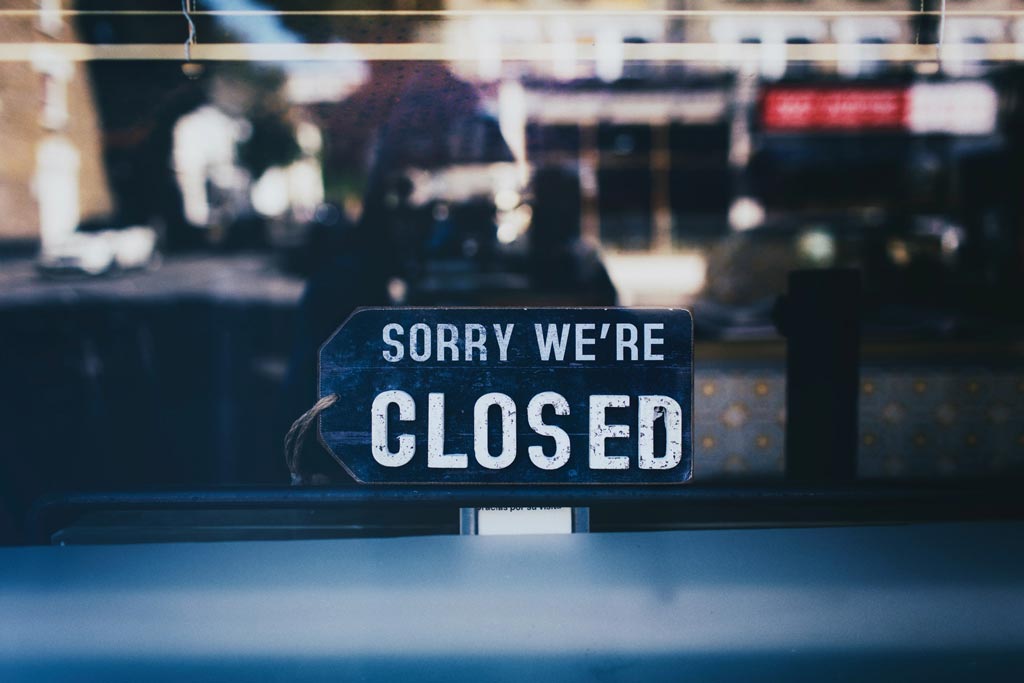
Largest Retail Bankruptcies Caused By 2020 Pandemic
Largest Retail Bankruptcies Caused By 2020 Pandemic
As we know at this point, the COVID-19 pandemic has thrown major companies in the US and the world over into complete havoc. Many have filed for bankruptcy, with an unfortunate number having to shut down their operations indefinitely. In April 2020 alone, a record of 560 companies filed for bankruptcy in the US.
Let’s find out how some of the world’s largest corporations, most of which seemed impregnable, collapsed under the economic strain of the pandemic. All it took was mere months for it to happen; those companies that were struggling before the pandemic stood almost no chance.
1. Frontier Communications
Frontier Communications is a high-speed internet company that serves millions of Americans. It runs copper and fiber-optic networks in 29 states in the US. In 2019, Frontier Communications reported earning a massive $8.1 billion in annual revenue.
Regardless of last year’s wealth, in April 2020, the company announced that it was filing for bankruptcy. The company also announced it was initiating the sale of its primary operations in various US states. These included Washington, Idaho, Oregon, and Montana. Frontier sold the assets to Northwest Fiber for a staggering $1.35 billion. The two parties made these transactions in cash.
As a result of this restructuring strategy, Frontier Communications scaled down its debt by $10 billion. Furthermore, the company also already received debtor-in-possession financing to the tune of $460 million. The company added these strategic funding assets to the $700 million it possessed in cash.
Management expected that these measures, added to the $1.1 billion liquidity cash, would be sufficient to allow Frontier to meet all operational obligations and costs.
2. Diamond Offshore Drilling
Diamond Offshore Drilling, a leading US drilling company, filed for bankruptcy soon after coronavirus struck in April 2020. The company headquartered out of Houston, Texas, blamed the virus for triggering low oil demand and a significant business decline. Diamond also blamed the adverse consequences of unrelenting price wars involving OPEC and Russia for their filing status.
Suspiciously so, before filing for bankruptcy, Diamond Offshore hired restructuring advisers and skipped interest payments. The giant driller also drew $400 million as a revolving credit facility. So perhaps their economic struggle wasn’t all the coronavirus’s fault.
Despite this situation, Diamond Offshore still retains sufficient capital to maintain regular business while carrying out restructuring strategies. In 2019, the company reported raking in a whopping $981 million in revenue. In the same period, Diamond had 2,500 employees.
3. JC Penney
JC Penny is a giant US clothing retailer based in Plano, Texas, US. Penny filed for bankruptcy in July 2020. The retailer previously battled many other economic challenges revolving around declining sales. As a result, it fell into debt, amounting to a staggering $4 billion.
The pandemic exacerbated the economic strain on the company significantly. Beginning April 2, 2020, JC Penny started laying off many of its hourly workers. It also threatened its partnership with makeup seller Sephora. The company was forced to rush to court to ensure Sephora stay part of the franchise.
The clearest tell-tale sign that JC Penny had waded waist-deep into trouble, however, came on April 15 when the retailer skipped an interest payment valued at $12 million. On May 7, Penny similarly defaulted on a $17 million interest repayment. After a while, Penny managed to fulfill the $17 million interest rate payment. This was only after the retailer engaged in talks with its lender. In the long run, JC Penny hopes to win a $450 million grant. This amount would be enough to care for its operations and bankruptcy issues.
JC Penny operates at least 850 stores and employs almost 90,000 workers. Unfortunately, owing to the terms of the bankruptcy process, the chain may have to close down 200 utility stores permanently. In just the fourth quarter of business, which ended in February this year, the company’s profits fell sharply to $3.38 billion. This is a 1.7% fall from the previous year.
4. John Varvatos Enterprises
John Varvatos is a reputable global lifestyle franchise launched in 2000. The retail giant sells a collection of sportswear and tailored clothing. The chain deals with popular men’s lifestyle garments, including footwear, belts, bags, fragrances, and jewelry.
The menswear retailer filed for bankruptcy in May 2020, stating it was soaked in the negative impact of the COVID-19 pandemic. Initially, the outbreak forced a temporary close, but there ultimately was no other option but to shut down operations for good.
In the wake of this decision on May 6, 2020, the company sold all its assets and business to Lion Capital, a British entity. In the agreement, Lion Capital will provide financing in the form of debtor-in-possession, supporting its operation and cash flow.
5. Neiman Marcus
Neiman Marcus is a Dallas-based luxury department store that miraculously avoided bankruptcy in 2019 and successfully restructured its massive debts. But, the shock of 2020 was enough to leave management gaping. They would not recover.
After skipping out on its debt payments (amounting to unspecified millions of dollars), Neiman Marcus filed for bankruptcy in May. Earlier, on March 17, Neiman closed down all its stores as COVID-19 precautions dictated. This included New York’s iconic Bergdorf Goodman location, which is Neiman’s flagship. Neiman was also forced to lay off the majority of its 14,000-strong staff.
As noted, Neiman already faced enormous challenges well before the coronavirus pandemic broke out. The company also battled cut-throat competition from thriving online rivals as well as a biting cash crunch.
Fortunately, Neiman Marcus later acquired funding and now may soon open its doors once again. Creditors offered the leading retailer $675 million. The company’s management expects this financial boost to allow continued operations, even during the restructuring process.
Moreover, as soon as Neiman Marcus overcomes its bankruptcy, the company will receive an extra $750 million. However, the main hurdle for Neiman lurks in the fact that to escape the bankruptcy ax. It must deal with its $4 billion accumulated debt. This amount is the balance remaining from previous transactions involving the Canada Pension Plan Investment and the Ares Management private equity group. The deal initially involved $6 billion, stretching back to 2013.
The giant retailer currently manages 43 stores. It also runs two Bergdorf Goodman stores. The company announced in March 2020 that plans were underway to shutter the off-price locations. Neiman has reopened select stores for private appointments and curbside pickup services.
Final Thoughts
The focus on COVID-19 and the world economy gives us an uncertain outlook on how things will recover — or not — over the next few years. Will things get better? Will it get worse? The jury’s still out. Disruptions and losses have affected millions everywhere, and not just the companies themselves, but the people who work for those companies as well.
In the US, we are experiencing the largest retail bankruptcies we have seen in a decade. And these are merely a small taste the economic devastation worldwide.


